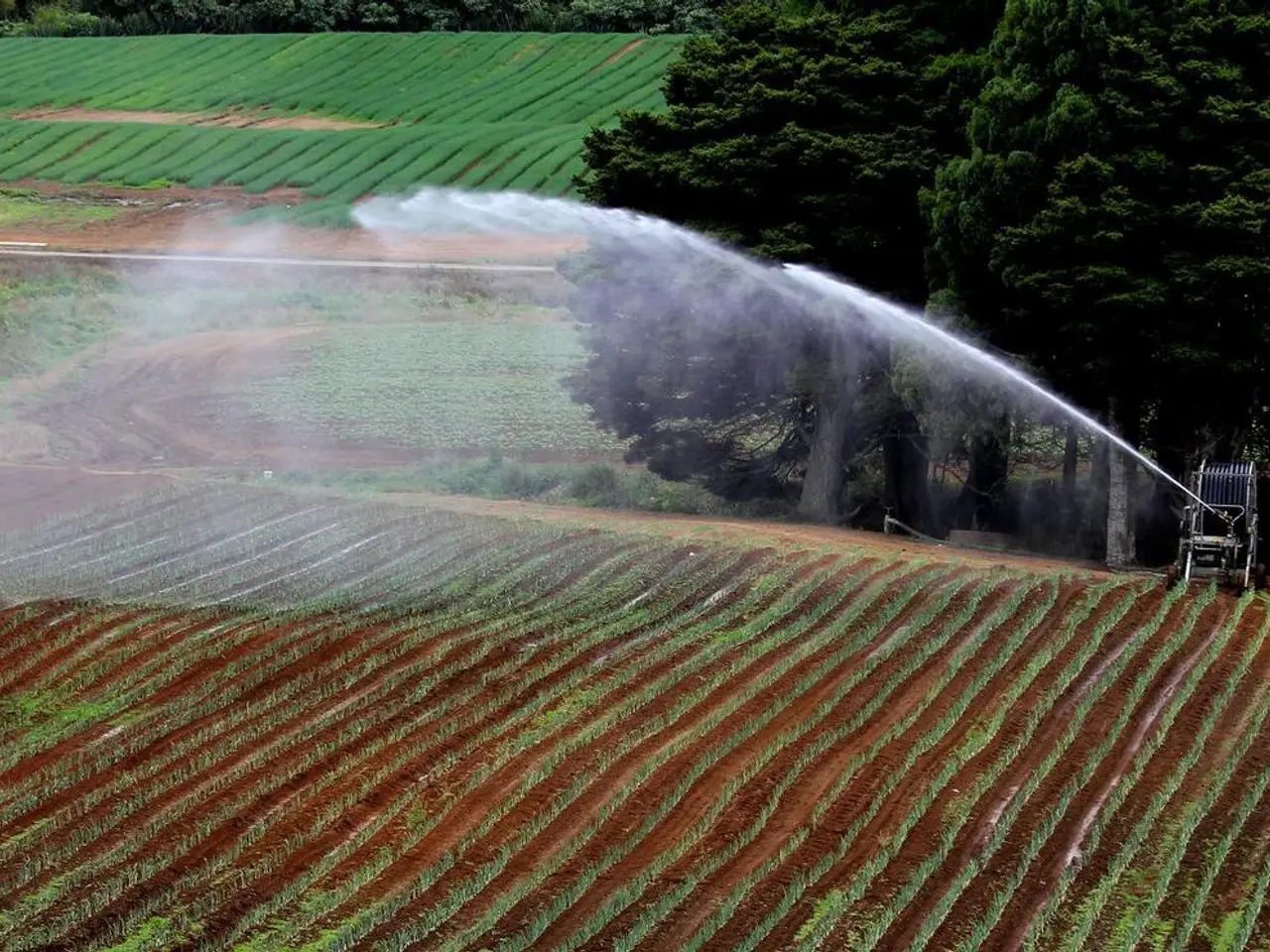India's kharif crop planting increased by 4% compared to last year, with 90% of the usual farming area being utilized.
As we move towards the midpoint of the 2025 Kharif season, Indian farmers are showing a mixed trend in sowing various crops.
Urad and arhar, two important pulses in the Indian diet, are exhibiting contrasting trends compared to last year. Urad sowing has slightly declined by approximately 6.7% year-on-year, with sowing continuing until mid-September. However, some reports suggest slight increases in urad area at the national level, but these are marginal [2][3]. On the other hand, arhar sowing has decreased by around 8.1% compared to last year, with a noted decline of about 2 lakh hectares in some data [2][3].
In a positive note, the sowing area for the main cereal, paddy, is 12.1% higher than last year, at 364.8 lakh hectares. This surge in paddy sowing reflects overall farmer optimism and favourable monsoon conditions [1][2][3][5].
The sowing area for the Kharif season, as of August 8, is 995.63 lakh hectares, which is 4% higher than the same period last year. This increase is driven mainly by the rise in paddy sowing, as well as increases in moong (green gram) and moth bean sowing.
In comparison to last year, farmers are planting more paddy and some pulses like moong and moth bean, but arhar and urad sowing areas are somewhat shrinking, possibly due to market or agronomic factors [1][2][3][4][5].
Here's a brief comparison for the 2025 Kharif season versus 2024:
| Crop | Trend in Sowing Area | Approx. Change | |-----------|-------------------------------------------------|---------------------------------------| | Urad | Slight decline or marginally steady | -6.7% YoY or slight increase reports | | Arhar | Decline | -8.1% YoY; ~2 lakh hectares less | | Moong | Increase | +16.1% YoY; 0.42 million hectares up | | Moth Bean | Increase | +0.31 million hectares up | | Paddy | Strong increase | +12% to +13.4% YoY |
Other crops like maize, soyabean, and groundnut are showing a decrease in sowing area, while jowar, bajra, and sunflower are at similar levels as last year. Sugarcane planting is nearly completed at 57.31 lakh hectares.
Jute planting is nearly completed at 5.54 lakh hectares. The monsoon rainfall was 6% higher than normal during June-July, with the central meteorological subdivision being 4% surplus, and the north-west region receiving 16% above normal rainfall. However, no information is provided about the risk of disease due to excess rain during the pre-harvest period in September.
In states like Haryana, efforts are being made to promote pulses including urad and arhar with financial assistance and seed subsidies to boost sowing, despite competition from paddy cultivation [4]. As the Kharif season progresses, it will be interesting to see how these trends evolve and how they impact the Indian agricultural landscape.
Read also:
- Court petitions to reverse established decision on same-sex marriage legalization
- Heavy rain causes flash floods in Hyderabad, resulting in severe waterlogging and disruptions to city life during a heavy downpour.
- Unpleasant nights plague city dwellers due to intense heatwave conditions
- Water shortage persists on Big Island








